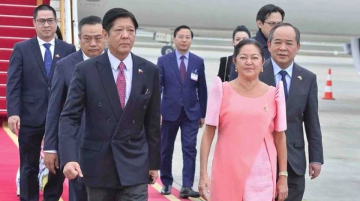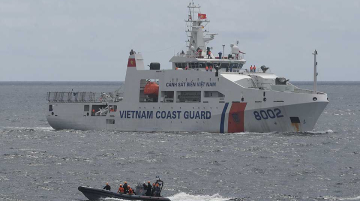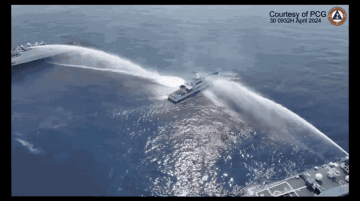Vietnam has formally protested recent actions by China and the Philippines at Sandy Cay, a feature it claims as part of its sovereignty over the Spratly Islands. It warns that such moves threaten regional peace and international maritime law.
Spokeswoman for the Ministry of Foreign Affairs Pham Thu Hang confirmed on Saturday that Vietnam had issued diplomatic protests to both countries, stating that their activities on Hoai An Reef and adjacent features in Truong Sa (Spratly) Archipelago violated Vietnam’s territorial rights.
“Vietnam has conducted diplomatic communications and lodged diplomatic notes of protest to the countries concerned regarding activities that violate Vietnam’s sovereignty over Hoai An Reef and other related features in the Spratly Archipelago,” Hang said, emphasising Vietnam’s firm stance on its territorial claims in the South China Sea.
The protest follows the raising of flags and landing of personnel by China and the Philippines at Sandy Cay—known internationally as a disputed feature within the Spratly Islands. Vietnam has described these actions as violations of sovereignty and provocations that only escalate regional tensions.
“We have sufficient legal grounds and historical evidence to assert our sovereignty over the Spratly Archipelago in accordance with international law,” Hang affirmed. “Our sovereignty, sovereign rights, and jurisdiction over maritime zones are firmly based on the 1982 United Nations Convention on the Law of the Sea (UNCLOS).”
Raising Flags and Landing Personnel by China and the Philippines
The actions of both countries at Sandy Cay follow differing reports. Chinese state media recently reported that China’s coast guard had undertaken maritime operations at the site, while the Philippines dispatched a team and found no personnel there. Despite this, both sides raised flags designed to solidify territorial claims.
Vietnam responded sharply, highlighting that such activities undermine regional peace efforts. “The deployment of personnel to features under Vietnam’s sovereignty without permission complicates the situation, contradicts the Declaration on the Conduct of Parties in the South China Sea (DOC), and impedes negotiations on a Code of Conduct (COC),” Hang stated.
Vietnam has called on the involved parties to respect international law and cooperate in the spirit of diplomacy to avoid further escalation. “Vietnam demands that relevant parties respect Vietnam’s sovereignty over the Spratly Archipelago, refrain from actions that further complicate the situation, comply with international law, and work together to maintain peace and stability in the East Sea,” Hang added.
The statement underscores Vietnam’s commitment to peaceful conflict resolution, reaffirming that it intends to address territorial disputes through legal channels and dialogue rather than military confrontation.
Sandy Cay is situated close to Thitu Island, which is the largest of the features occupied by the Philippines. The South China Sea remains a complex flashpoint, with overlapping claims not just from Vietnam but also China, Malaysia, and Taiwan, all vying for control of its strategic and potentially resource-rich waters.
China’s controversial “nine-dash line,” which claims more than 90 per cent of the South China Sea, further complicates the matter, encroaching on the exclusive economic zones of Vietnam, the Philippines, and other Southeast Asian nations.





